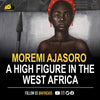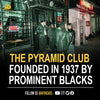Afar, Amharic Adal, Arabic Danakil (singular; now pejorative), a people of the Horn of Africa who speak Afar (also known as ’Afar Af), a language of the Eastern Cushitic branch of the Afro-Asiatic language family. They live in northeastern Ethiopia, southeastern Eritrea, and Djibouti, where, with the Issas, they are the dominant people. It is thought that the Afar were the first of the present inhabitants of Ethiopia to elaborate their pastoral life into full-scale nomadism, descending from the highlands of southeast Ethiopia and migrating to the stony desert area of Danakil, the name sometimes used by Arabs to identify them but which is now considered to be offensive.
The Afar Triangle is one of the earth's hottest and driest spots. where temperatures in the naked plains frequently soar above 50 degrees centigrade, exacerbated by the fierce blowing of the Gara, which translates as Fire Wind. Much of their territory is desert and salt flats, cut by great cracks from the sun's heat. Such inhospitable conditions haven’t stopped the Afar, who regard themselves as the oldest of Ethiopia’s ethnic groups having occupied their arid homeland for at least 2,000 years.
Proud, highly individualistic, and much feared by outsiders, they are organized in patrilineal kin groups. Cooperation in larger units such as a subtribe or tribe is induced only by warfare against other tribes or neighbouring peoples. Two distinct classes, the Asaimara (“Red Men”) and the Adoimara (“White Men”), constitute the landowning, titled nobles and the lower-class tenants, respectively
The Afar are nominally Muslim, but a minimal level of orthodoxy in practice is attained only in the coastal regions and in the sultanates. The nomads of the interior are lax, and, though they hold Islam in great esteem, their own practices are imbued with the earlier Cushitic religion.







